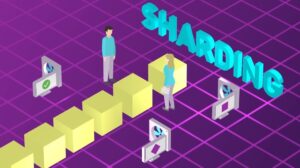Methods of Decentralization in Blockchain Technology
Introduction
Methods of Decentralization in Blockchain Technology: Blockchain technology has gained immense popularity due to its decentralized nature, offering transparency, security, and immutability. Decentralization in blockchain refers to the distribution of authority and control across a network of nodes, eliminating the need for intermediaries. Moreover, this article delves into various methods of decentralization in blockchain technology.
I. Consensus Mechanisms
A. Proof of Work (PoW)
1. Explanation: Furthermore, PoW requires miners to solve complex mathematical puzzles to validate transactions and add blocks to the blockchain.
2. Decentralization Aspect: Additionally, decentralization is achieved as no single entity can control the network, and decision-making power is distributed among miners.
3. Sustainability Concerns: Moreover, PoW consumes significant computational resources, leading to environmental concerns.
B. Proof of Stake (PoS)
1. Explanation: Moreover, PoS selects block validators based on the amount of cryptocurrency they hold and are willing to “stake” as collateral.
2. Decentralization Aspect: Furthermore, validators are chosen based on their stake, distributing power among those with a vested interest in the network.
3. Energy Efficiency: Additionally, PoS is more energy-efficient compared to PoW, addressing sustainability concerns.
II. Peer-to-Peer Network

A. Explanation: Additionally, blockchain operates on a peer-to-peer (P2P) network, where each participant (node) communicates directly with others without relying on a central authority.
1. Decentralization Aspect: Furthermore, transactions are broadcasted and validated by multiple nodes, eliminating the need for a central authority.
2. Redundancy and Resilience: Moreover, P2P networks are highly redundant and resilient, as there is no single point of failure.
B. Network Sharding

1. Explanation: Additionally, sharding divides the blockchain network into smaller, more manageable parts called shards, each capable of processing transactions independently.
2. Decentralization Aspect: Furthermore, sharding enhances scalability without compromising decentralization by distributing transaction processing across multiple shards.
3. Challenges: Moreover, ensuring secure communication and coordination among shards is crucial to maintain decentralization.
III. Decentralized Governance
A. DAOs (Decentralized Autonomous Organizations)
1. Explanation: Additionally, DAOs are self-governing entities coded into smart contracts on the blockchain, enabling decentralized decision-making.
2. Decentralization Aspect: Furthermore, governance decisions, such as protocol upgrades and fund allocation, are made collectively by DAO members without central authority.
3. Challenges: Moreover, ensuring transparency, accountability, and resolving conflicts within DAOs are ongoing challenges.
B. On-chain Governance
1. Explanation: Additionally, on-chain governance involves using blockchain-based mechanisms to facilitate decision-making processes within a decentralized ecosystem.
2. Decentralization Aspect: Moreover, stakeholders participate in voting on proposals directly on the blockchain, enabling transparent and democratic governance.
3. Implementation Challenges: Furthermore, balancing participation and avoiding plutocracy (where wealthy stakeholders have disproportionate influence) are key challenges.
IV. Decentralized Storage and Computing
A. Distributed Storage Systems
1. Explanation: Additionally, decentralized storage platforms leverage blockchain technology to store data across multiple nodes, ensuring redundancy and security.
2. Decentralization Aspect: Furthermore, data is distributed across the network, making it resistant to censorship and single points of failure.
3. Examples: Filecoin, IPFS (InterPlanetary File System).
B. Decentralized Computing
1. Explanation: Moreover, blockchain platforms integrate decentralized computing capabilities, enabling the execution of smart contracts and decentralized applications (DApps).

2. Decentralization Aspect: Smart contracts run on a distributed network of nodes, ensuring trustless execution without reliance on a central authority.
3. Challenges: Scalability and efficiency remain challenges for decentralized computing platforms.
Conclusion
Decentralization lies at the core of blockchain technology, offering numerous benefits such as transparency, security, and censorship resistance. Through consensus mechanisms, peer-to-peer networks, decentralized governance, and distributed storage/computing, blockchain achieves a paradigm shift in how we perceive and implement trust and authority in digital ecosystems. Embracing and refining these methods will further enhance the decentralization and resilience of blockchain networks in the future.

